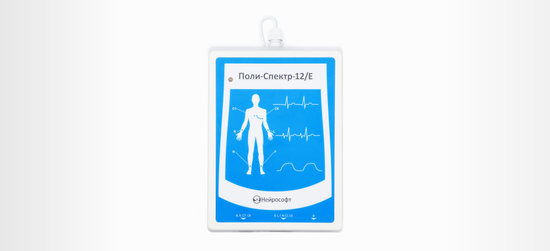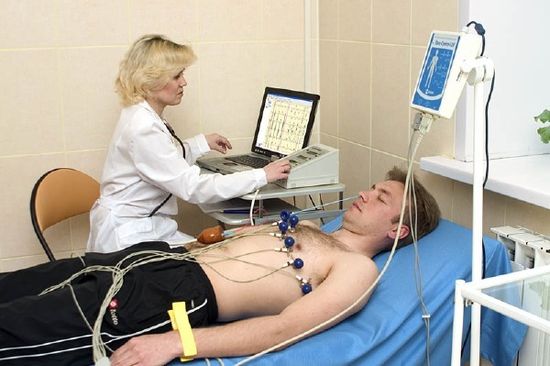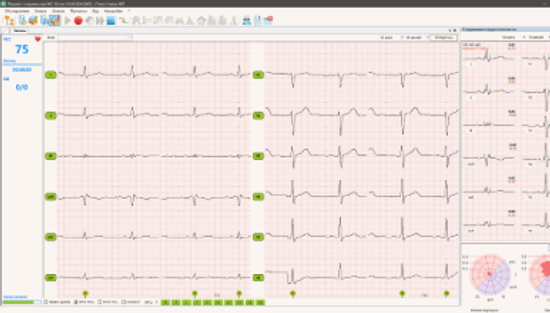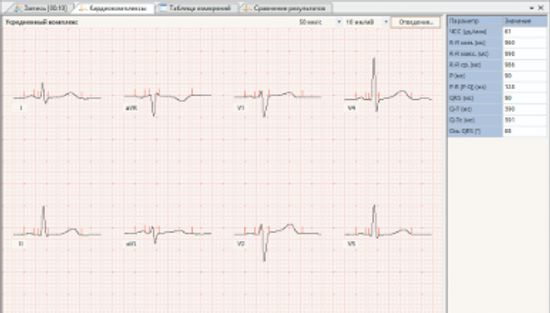REVIEW
12 standard ECG leads, 2 transesophageal leads, 1 respiratory channel
When using Poly-Spectrum-12/E, the esophageal leads are recorded in parallel with the recording of all 12 leads of the surface ECG. The parameters of the electronic circuit of the additional channels are designed in such a way that the polarization of the esophageal electrodes during stimulation does not cause blocking of the ECG recording.
Additional channels can also be used to record superficial thoracic leads (V7 and V8).
Best-in-class recording quality
The heart rate increased to 10,000 Hz allows you to obtain high-quality electrocardiograms in any conditions. With a set of hardware and software filters, as well as the benefits of 24-bit ADCs, no isoline shift is ensured during pacing and stress testing.
Pacemaker pulse detection
The program automatically detects the impulses of a pacemaker (implanted or transesophageal). This allows you to accurately record cardiac complexes, excluding pacemaker pulses from the analysis. When viewing the recording, pacemaker pulses are marked with special markers.
ECG contour analysis
In the contour analysis mode, the doctor sees the selected cardio complex or the complex averaged over the entire recording. The program automatically places markers at the nodes of the complex. By clicking on a cardio complex in any lead, the doctor can view it at an enlarged scale, take measurements using an electronic ruler and, if necessary, manually adjust the placement of markers.
Automatic protocol generation
The result of the contour analysis is a conclusion. It consists of an image of the cardio complex in all leads, measurement tables and automatic interpretation. The doctor can make any changes to the conclusion. It is possible to automatically generate and print the conclusion.
Support for the HL7 and DICOM data transfer interfaces allows you to include Neurosoft diagnostic systems in the information space of the clinic.
Currently, all large and a number of small clinics are equipped with information systems in which medical data are stored and processed. To work fully in such institutions, the software must be able to integrate into such information systems. The most common standard for the exchange of health information is HL7 (Health Level 7).
Neurosoft software supports HL7 messaging. However, HL7 only defines the message format and general principles of data transfer, and each specific information system can use its own data exchange scenario. The specialists of our company are ready to customize the software to the needs of any clinic in order to ensure the most effective integration using the HL7 protocol.
Neurosoft software also supports the DICOM network protocol. Through the DICOM Modality Worklist service, the diagnostic software can exchange information with the clinic's information system: receive data on the required examinations and transmit the results of the examinations performed.




